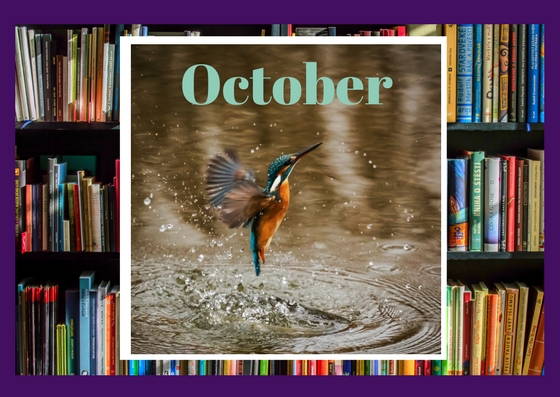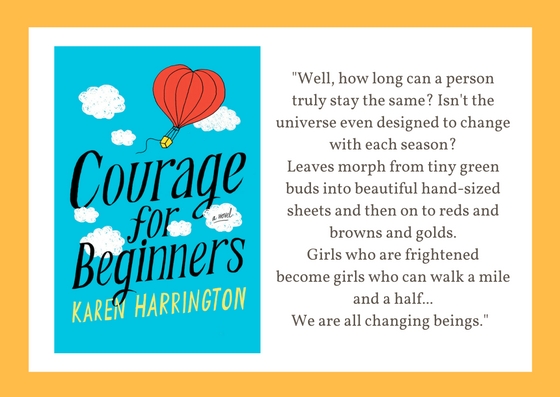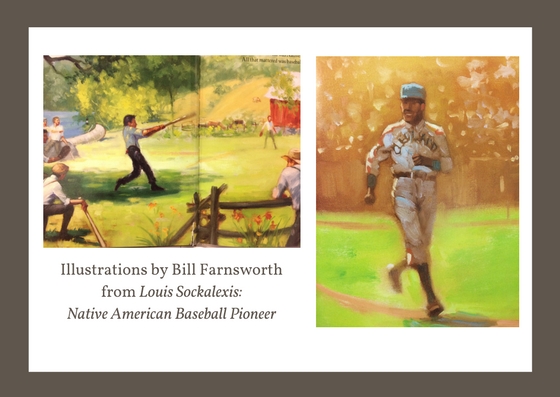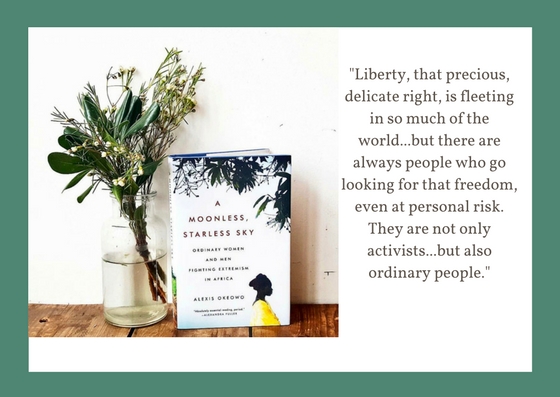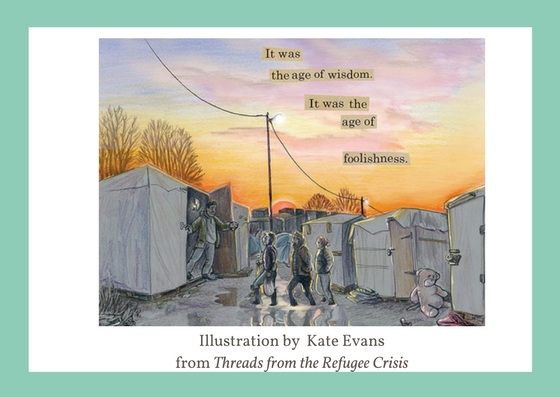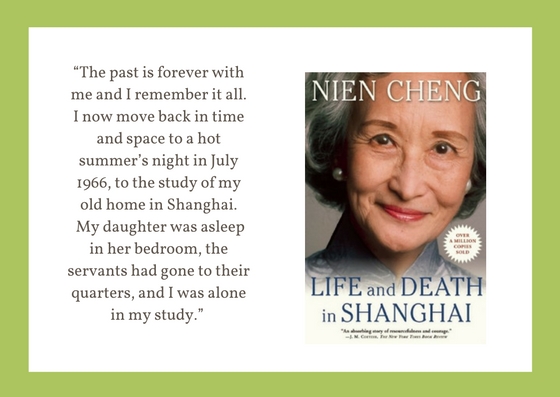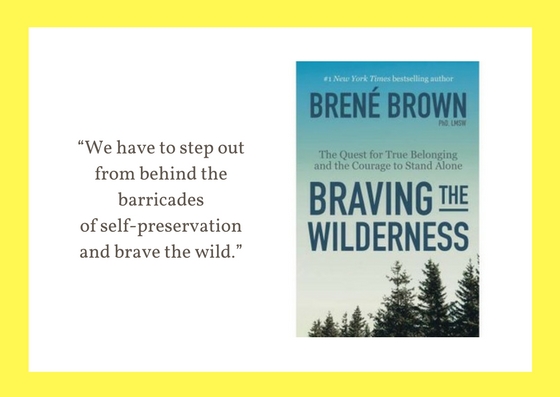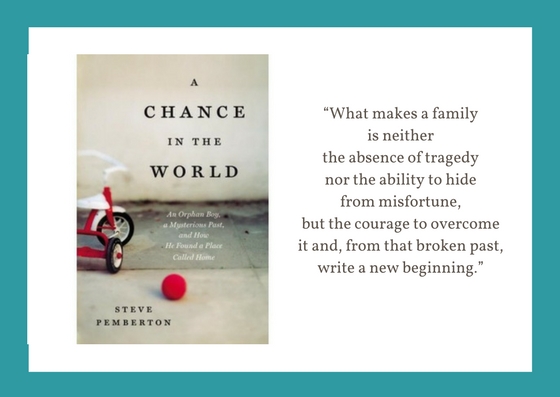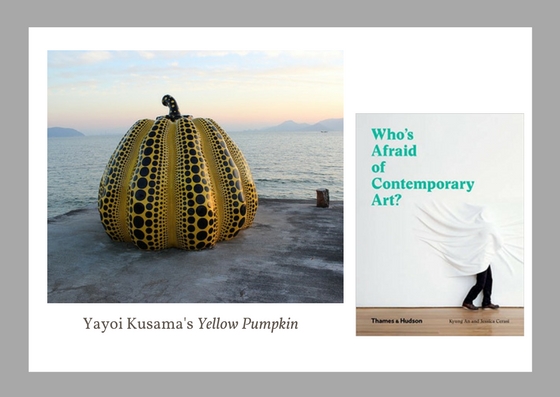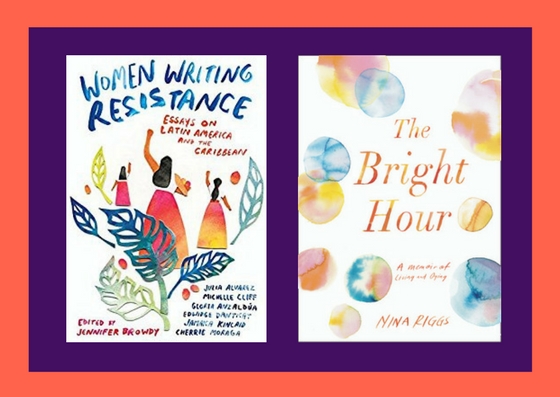October Staff Picks
“Here we are closer to something I am trying to understand: that openness to fear.
We are hearts and stingers. We ride the tide.
We believe in resistance; we are made both of fight and float.”
-from The Bright Hour, by Nina Riggs
This month our Staff Picks share a variety of different kinds of stories, experiences, and voices from library collections that engage with themes of fear and courage as well as education and action, challenges, resilience, resistance and growth.
Youth Services: Fiction and Biography
Carrie’s Pick
Courage for Beginners, by Karen Harrington
What does it mean to have courage?
Twelve-year-old Mysti Murphy is faced with many of the same trials middle schoolers face every day: friends turning out to be not so friendly, the work of making new friends, the wish to fit in and be accepted. But for Mysti true courage comes when she accepts herself, and her family situation, and ultimately asks for help.
Having courage does not mean shouldering the whole load. Courage often comes from recognizing our limitations, and accepting the help we need. With humor and an obvious love for avid readers, Karen Harrington spins a tale of family, friends, and courage in the face of adversity.
___________________________________
Kerry’s Pick
Louis Sockalexis: Native American Baseball Pioneer is a picture book biography that tells the story of Louis Sockalexis, of the Penobscot Nation, the first Native American major league baseball player. The story focuses on his childhood in Maine and his baseball career, leading up to his first game with the Cleveland Spiders. Maine author Bill Wise writes that Sockalexis began playing baseball as a child when a group of white boys invited him to play, and he immediately took to the game. Although he excelled at the sport, he was constantly harassed and mocked by spectators who yelled racial slurs at him at him for “playing a white man’s game.” When Sockalexis joined the Spiders, Amos Rusie, the pitcher of the New York Giants, promised to strike him out. When it was his turn to bat the crowd booed and jeered, but Sockalexis ignored their taunts and hit a home run on the first pitch. He defied racism and prejudice, and his bravery paved the way for future Native American players.
For adults interested in learning about Sockalexis there is also the biography Indian Summer: The Forgotten Story of Louis Sockalexis, The First Native American in Major League Baseball.
___________________________________
Adult Services: Nonfiction and Memoir
Nate’s Pick
Alexis Okeowo (a frequent contributor to The New Yorker) recently released her first book length work, A Moonless, Starless Sky: Ordinary Women and Men Fighting Extremism in Africa. Okeowo’s well-researched reportage adds humanity and depth to stories often treated shallowly in the international news, sharing stories that illuminate people caught in moments of tremendous upheaval and the ways they push back against turmoil.
Okeowo focuses on four tales of everyday life during challenging times across four different African locales. A chronicle of deeply flawed modern love unfolds across the borderlands of Uganda and Sudan (now South Sudan) during the height of the Lord’s Resistance Army, reflecting the muddy realities of the modern world. Resistance to slavery in Mauritania introduces the reader to an activist willing to risk his life to abolish the embedded institution from his society. A third storyline follows members of a community in Maiduguri, Nigeria, home to Boko Haram. Readers learn of individual acts of heroism from members of the “Chibok Girls,” as well as the establishment of a neighborhood militia, organized to oppose the increased presence of Boko Haram in the region. Finally the love of basketball takes Okeowo to Mogadishu, where she highlights the challenges facing a number of female basketball players and their defiance of Al-Shabaab.
More than just tales of overcoming fear, Alexis Okeowo’s writing embraces the imperfection of everyday life. A Moonless, Starless Sky avoids descriptions which paint countries in Africa as places where only good or terrible events occur; the individuals Okeowo writes about have faults and make questionable decisions. This book ultimately amounts to a return of agency to individuals and communities caught up in some of the world’s more tragic events, becoming an empowering testament to those who stand up for injustice throughout the world.
___________________________________
Aprill’s Pick
Kate Evans shines light on the courage of refugees in her nonfiction graphic novel Threads from the Refugee Crisis. Evans spent time as an aid volunteer in the Calais Jungle, a French refugee encampment that sheltered thousands of African and Syrian refugees before it was destroyed by the French government in 2016. As a volunteer, Evans made friends in the camp, and she tells their stories throughout her account. I loved many things about this book, despite not feeling instantly attracted to its art. After just a few pages, it struck me as appropriate that the book’s art comes across as urgent, raw, and sometimes frantic, for how else does one report from a heartbreaking crisis of catastrophic proportions? In contrast to most of Threads’ more roughly hewn lines, at times we get to see the careful, tender portraits Evans drew for people she met in the camp. The portraits are powerful, both as gifts of art for those in camp, and as human faces that those of us reading cannot forget.
While conditions in the Jungle are horrifying, Threads serves as a report on the tenacity of the human spirit and its potential for courage. Despite the horrors of war, and the heartlessness of nationalist policies that keep many refugees from resettlement, Evans meets people who have hope. In the mud and cold rain of a refugee camp, babies are born, children play with soccer balls, and friendships are forged over shared makeshift meals. Threads’ message is clear: humanity persists, resilient despite all odds, but this does not excuse those of us leading less perilous lives from fighting to make the world a kinder and more just place.
___________________________________
George’s Pick
Thus begins the story of Nien Cheng, a widow who had worked as a liaison to the Chinese government for the Shell Oil company until that night in 1966 when the Red Guard, under the banner of the Cultural Revolution, stormed her house and took her away from her home and her daughter. She was held in a dank prison cell for 5 years in which she underwent deprivation, illness and intense psychological manipulation, all to get her to “confess” to crimes against the state. She refused to do it. She demanded to know what the crime was that she was admitting to, but was never told. She faced her accusers fearlessly and never backed down, sometimes being left in her cell, in virtual solitary confinement, for months at a time. Even when they decided to release her, she refused to leave until they printed an apology to her in the newspaper. All the while, she had no idea what had become of her young daughter.
Life and Death in Shanghai is the story of one woman’s incredible character and integrity, and is really a wonderful read. It also gives you a view into the history of Maoist China in its heyday.
___________________________________
Brandie’s Pick
I really enjoy Brené Brown’s books and have read most of them. I especially like listening to her audio books because she has a great voice. Although her books fall into the Personal Growth category, she is also a masterful storyteller. In her newest book, Braving the Wilderness, Brown focuses one of the most unsettling of fears…being alone. She argues that we’re experiencing a spiritual crisis of disconnection, and introduces four practices of true belonging that challenge everything we believe about ourselves and each other.
This book is short and to the point, with lots of truth bombs and motivational nuggets. Brown bases much of her book on a quote that she always struggled with by Maya Angelou: “You only are free when you realize you belong no place — you belong every place — no place at all.” It was only when she discovered freedom in standing alone that she realized there really is nothing to fear in the wilderness of being alone.
___________________________________
Williams’ Pick
A Chance in the World, by Steve Pemberton
Author Steve Pemberton shares how he overcame mental and physical obstacles in the early years of his life, after he was dropped off at a foster home at the age of 5. It started with a neighbor’s small acts of kindness and caring—and a box of books. From one of those books he learns that he must fight in any way he can—for victory is in the battle. His victory is to excel in school.
Against all odds, Pemberton succeeded. He attended college, graduated, became a successful corporate executive, and married a wonderful woman with whom he established a loving family of his own. Through it, he dug voraciously through records and files and found his history, his birth family—and the ultimate disappointment as some family members embrace him, but others reject him. A Chance in the World is a heart-rending but uplifting story of the human spirit’s ability to prevail.
___________________________________
Raminta’s Pick
Who’s Afraid of Contemporary Art? by Kyung An and Jessica Cerasi is a fantastic introduction to the current world of art. If you are a layperson just wanting to get a slight grip on the whats and whys of contemporary art, this really is the book for you. The book breaks down different topics in art into 26 different short essays. None of these need to be read sequentially and in fact, the essays encourage you to jump around. Topics range from why folks become artists to curating and conserving, along with quick descriptions of contemporary pieces by artists such as Yayoi Kusama and Tania Bruguera. This is a judgement-free book. One of my favorite chapters is entitled, “WTF?! What on earth am I looking at?” and it starts off by trying to put the reader at ease: “Contemporary art can be hard work. Everyone at one point of another has walked into an art gallery, taken one look at what’s on display and thought, ‘What The F… is that?!?!?’ And it may be that the little texts on the walls confuse things even more, leaving you feeling like you just don’t get it. Unfortunately, this experience is quite normal.”
Understanding art, whether it is contemporary or not, is a process that first starts with the person experiencing the art, allowing themselves to be open to whatever message the artist is trying to portray. And the best message portrayed in this book is that you don’t have to like all of it.
___________________________________
Elizabeth’s Picks
Poet and writer Nina Riggs died from complications of breast cancer at age 39 this year, leaving her family, loved ones, and her memoir The Bright Hour behind. “I am reminded of an image,” she wrote, “that living with a terminal disease is like walking on a tightrope over an insanely scary abyss. But that living without disease is also like walking on a tightrope over an insanely scary abyss, only with some fog or cloud cover obscuring the depths a bit more — sometimes the wind blowing it off a little, sometimes a nice dense cover.”
Riggs’ candid exploration of fear and joy in her last months of life offers up a fog-blasting sense of perspective. Full of moving humor, gratitude, sorrow, and observations both gentle and sharp, her story is a memorable final homage to this brief life. The title quotes Riggs’ great-great-great grandfather, Ralph Waldo Emerson: “That is morning; to cease for a bright hour to be a prisoner of this sickly body, and to become as large as the World.”
***
“The function of freedom is to free someone else.” Julia Alvarez quotes Toni Morrison in Women Writing Resistance: Essays on Latin America and the Caribbean. 16 writer-activists contribute to this new anthology, including Gloria Anzaldúa, Cherríe Moraga, Jamaica Kincaid, Rigoberta Menchú, and Michelle Cliff.
As Jennifer Browdy observes in the introduction,”As women who understand their writing as a form of resistance to the intertwined and complex oppressions of imperialism, elitism, racism, sexism, and homophobia, they have long been practicing transnational, intersectional feminism…all the contributors to this volume have challenged borders—linguistic, geographical, social, cultural, ideological—through their writing and in their own lives.” And as Gloria Anzaldúa writes: “Writing is dangerous because we are afraid of what the writing reveals: the fears, the angers, the strengths of a woman under a triple or quadruple oppression. Yet in that very act lies our survival because a woman who writes has power.” These powerful voices encourage truth-telling, courage, and connection in the darkest times.
“We write our resistance, page after page,” notes Veronica Chambers, “And we hope that the force with which we move our pens across the page can be matched by those who value life, democracy, equality, and humanity off the page, out in the world.”
___________________________________
As always, thank you for reading.
posted: , by Elizabethtags: Library Collections | Recommended Reads | Adults | Art & Culture

